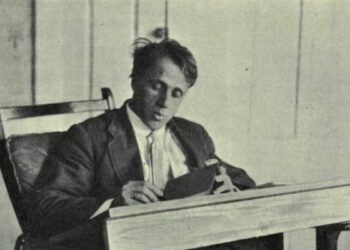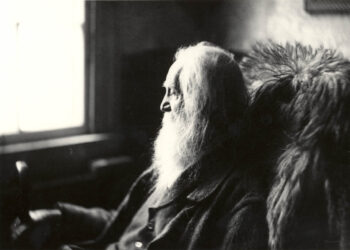Introduction
Blowin’ In The Wind Summary And Themes By Bob Dylan Blowin’ in the Wind is one of the most iconic songs written by American singer-songwriter Bob Dylan, first released in 1962. With its strikingly simple melody and deeply profound lyrics, the song became an anthem for the civil rights movement and the counterculture of the 1960s. The questions raised in the song are universal, tackling themes of justice, peace, and human freedom, while the refrain “The answer, my friend, is blowin’ in the wind” suggests that the solutions to these global struggles are already clear, but not fully recognized or acted upon.
Dylan, whose music has often been synonymous with social change, used Blowin’ in the Wind to explore the complex and troubled social and political environment of his time. The 1960s were marked by racial inequality, the Vietnam War, civil rights protests, and a growing sense of dissatisfaction with the status quo. In just a few short verses, Dylan captured the yearning for peace and equality, expressing the frustrations of a generation desperate for answers and action. The song’s concise and evocative phrasing makes it timeless, and it continues to resonate with audiences across generations, symbolizing the continued struggles for justice and human rights.
Summary of Blowin’ in the Wind by Bob Dylan
Blowin’ in the Wind is a song that consists of three verses and a chorus, each of which is built around a series of rhetorical questions. These questions address some of the most pressing social, political, and existential concerns of the time and continue to resonate today. The song’s stark simplicity and lyrical beauty have made it one of Dylan’s most enduring works.
The first verse starts by asking how many significant struggles a person must endure before they are recognized as truly living their life with purpose. Dylan asks, “How many roads must a man walk down / Before you call him a man?” and “How many seas must a white dove sail / Before she sleeps in the sand?” These lines reflect the long journey of perseverance required to overcome social injustice and inequality, specifically pointing to the struggles of marginalized groups.
Read more
Dylan goes on to question how many times peace must be fought for before it is attained. He asks, “How many times must a cannonballs fly / Before they’re forever banned?” and “Yes, how many times must a man look up / Before he can see the sky?” These lines refer to both the literal and metaphorical battles for peace and justice, questioning the endurance of individuals who seek to bring about change.
The second verse shifts towards more questions about life, death, and human suffering. Dylan asks, “How many years can some people exist / Before they’re allowed to be free?” This question captures the frustration of those who have been oppressed and denied basic freedoms for far too long. The verse also focuses on the idea of human empathy and understanding, with questions about how long it takes for people to “see the light” of truth.
Finally, the song ends with the famous refrain: “The answer, my friend, is blowin’ in the wind, / The answer is blowin’ in the wind.” This line suggests that the solutions to these questions are not as distant or unattainable as they might seem. Rather, they are already present in the world, but they are often ignored or not fully recognized by those who hold the power to change the status quo.
The chorus, with its repeated message, creates a sense of urgency. It implies that the answers to the struggles for justice, peace, and freedom are right in front of us, in the air we breathe, but we must open our eyes to recognize them.

Themes in Blowin’ in the Wind by Bob Dylan
1. Social Justice and Civil Rights
One of the most powerful themes in Blowin’ in the Wind is the call for social justice, particularly in the context of racial inequality and the civil rights movement in the United States. The questions Dylan raises in the song, such as “How many years can some people exist / Before they’re allowed to be free?” point to the long history of racial oppression, discrimination, and the struggle for freedom. At the time the song was written, the civil rights movement was gaining momentum, and the lyrics echo the frustration and determination of those fighting for equality.
Dylan’s song not only questions the inequalities faced by African Americans but also reflects broader societal concerns about the treatment of marginalized people everywhere. The desire for justice and equality is not limited to the civil rights movement of the 1960s, but is an ongoing battle that resonates globally.
2. Peace and War
Blowin’ in the Wind also addresses the theme of peace in the face of war. The line “How many times must a cannonballs fly / Before they’re forever banned?” refers to the violence of war and the longing for a world free of such destruction. The song was written during the early years of the Vietnam War, and Dylan’s anti-war sentiment is palpable. The questions about war reflect the horrors of violence and the deep desire for peace. In this sense, the song serves as both a critique of the war and a broader call for an end to all forms of violence and conflict.
Dylan’s critique of war is not limited to the Vietnam War alone but is a broader comment on humanity’s failure to learn from the destruction and suffering caused by warfare throughout history. His call for peace is a universal plea for a more compassionate world, free from the ravages of war.
3. Human Rights and Freedom
The theme of human rights is a central focus of Blowin’ in the Wind. Dylan questions how long people must endure suffering before they are granted the freedoms they deserve. “How many times must a man look up / Before he can see the sky?” speaks to the idea of personal liberation and the need for individuals to have the agency to control their own destinies. It also speaks to the metaphorical “looking up” for answers and guidance, reflecting a yearning for truth and understanding.
By addressing the struggle for freedom, Dylan taps into the universal desire for liberty, dignity, and the right to live without oppression. The song suggests that these freedoms are natural rights, but they are often denied or delayed by oppressive systems.
Read more
4. Existential Questions and the Search for Meaning
Though Blowin’ in the Wind is often viewed as a protest song, it also explores existential themes about the human condition, the search for meaning, and the struggles of life. The song raises questions about life’s ultimate purpose, the nature of suffering, and the elusive nature of truth. “How many years can some people exist / Before they’re allowed to be free?” is a deeply philosophical question about the meaning of existence, personal agency, and the forces that shape human lives.
Dylan asks how long individuals must endure hardship before they can find fulfillment or freedom, suggesting that life is a long journey filled with challenges, but also with moments of revelation and potential change. The song’s refusal to provide direct answers reflects the complexity and ambiguity of these existential questions.
5. The Power of Change and Hope
Despite the deep and troubling questions Dylan poses, Blowin’ in the Wind carries an underlying sense of hope. The repeated refrain, “The answer, my friend, is blowin’ in the wind,” suggests that change is possible, but that it requires collective awareness and action. The wind, an invisible yet powerful force, symbolizes both the potential for change and the difficulty of harnessing that potential.
Dylan’s message is clear: the solutions to the world’s problems—whether they concern civil rights, war, or freedom—are already within reach, if people would only recognize them and act upon them. The song conveys optimism in the face of adversity, highlighting the importance of hope and collective action.
Analysis of Structure and Style
Blowin’ in the Wind is structured in a simple, repetitive form that reflects the song’s folk roots. The use of three verses and a repeated chorus creates a sense of continuity and urgency, and the song’s structure allows the central message to resonate deeply with the listener.
The song is written in the form of a series of rhetorical questions, each of which challenges the listener to consider the state of the world and their role in it. The repetition of these questions creates a rhythm that drives the song forward, enhancing its impact. Dylan’s use of repetition is deliberate, allowing the questions to build in emotional intensity while reinforcing the urgency of the message.
The song’s straightforward language and rhythm give it a timeless quality, making it accessible to a broad audience. The simplicity of the lyrics allows listeners to interpret the song in their own way, making it a universal anthem for social justice and change.

Conclusion
Blowin’ in the Wind by Bob Dylan is a timeless anthem for social justice, peace, and human rights. Through its simple yet profound lyrics, the song tackles some of the most pressing issues of its time and continues to resonate with audiences today. By posing questions about freedom, equality, and the human condition, Dylan challenges listeners to reflect on their role in shaping a more just and compassionate world. The song’s enduring popularity speaks to its universal message and its ability to inspire change, making it one of the most powerful protest songs ever written.
Read more
(FAQ)
1. What is the main message of Blowin’ in the Wind?
Blowin’ in the Wind addresses pressing social issues such as civil rights, war, and human rights. Its central message is that the answers to these struggles are already apparent and accessible, but people must recognize and act upon them. It suggests that justice, peace, and freedom are achievable, but require awareness and action.
2. How did Blowin’ in the Wind become a civil rights anthem?
Blowin’ in the Wind became a symbol of the civil rights movement because of its message of equality, freedom, and justice. The song’s lyrics resonated with the struggles for racial equality and human rights during the 1960s, particularly in the context of the ongoing fight for civil rights in the United States.
3. What does the phrase “The answer, my friend, is blowin’ in the wind” mean?
This phrase suggests that the solutions to societal issues such as inequality and war are already present and clear, but they are often ignored or not acted upon. The wind symbolizes a force that is invisible yet powerful, indicating that change is possible if people are willing to recognize and embrace it.
4. Is Blowin’ in the Wind still relevant today?
Yes, the themes of Blowin’ in the Wind remain highly relevant today. Issues such as racial inequality, war, and human rights continue to be pressing concerns in modern society. The song’s message of hope, justice, and peace continues to resonate with people around the world who are fighting for change.
5. Why is Blowin’ in the Wind considered a protest song?
Blowin’ in the Wind is considered a protest song because it raises important social and political questions and critiques societal injustices. Its lyrics speak out against war, inequality, and oppression, while calling for peace and human rights.
Read more

















